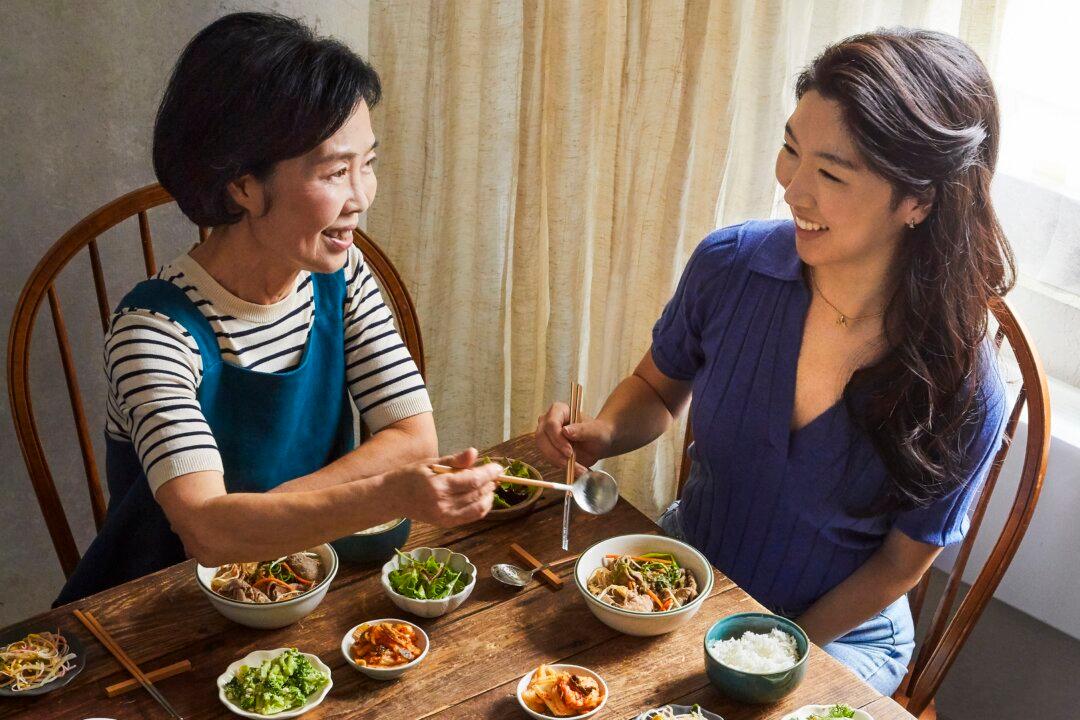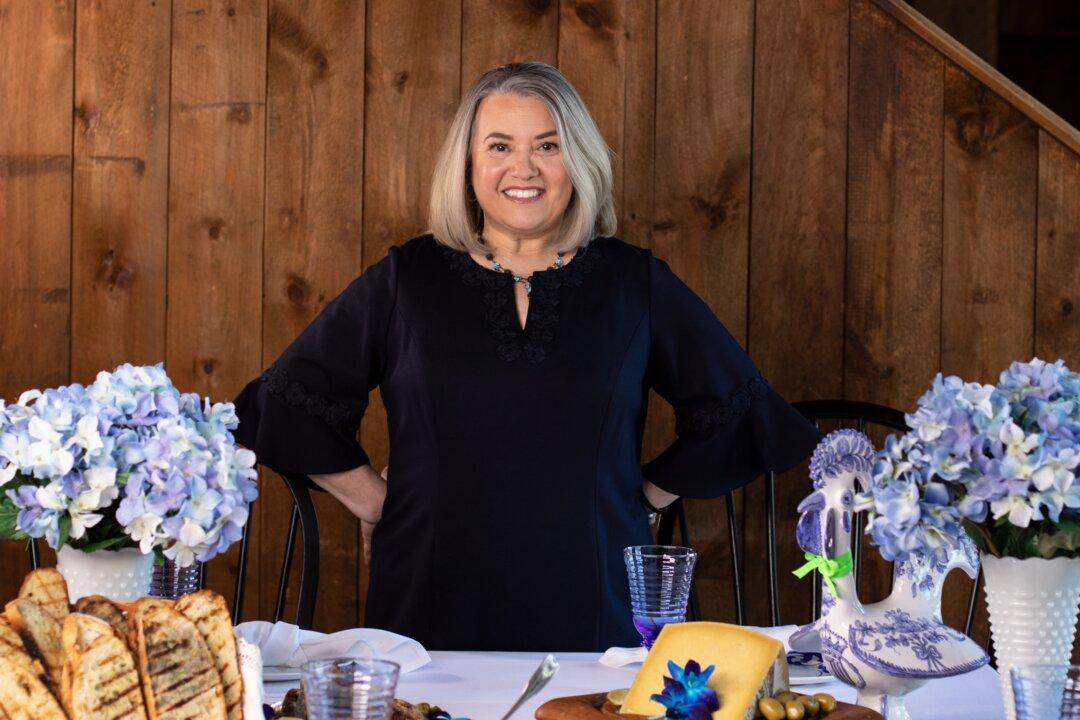Nam Soon Ahn crouches on the floor of her kitchen, under the recessed lights and brown cabinets. With latex-gloved hands, she mixes fermented vegetables and herbs in a large metal bowl. Her adult daughter, Sarah, films her mother and adds her own narration.
“Yes, she does make kimchi on the ground,” Sarah says. “A lot of people ask me why. It’s more ergonomic for my mom… and it’s something that our ancestors did as well.”
Back to Her Roots
Sarah was born in Orange County, California, to newly immigrated parents, who left Korea to give their children a better life. Nam Soon’s mother was a well-known home cook back in Korea, and during Sarah’s childhood, Nam Soon ran her own noodle restaurant.“My mom didn’t let me cook,” said Sarah. “This was at a time when Korean culture was not at all trending.” Sarah remembers well how she felt being the only Korean-American in her class. She asked her mom to make her a sandwich for lunch instead of kimbap: a dish of rice, vegetables, and tofu, wrapped in seaweed.
Every first-generation American knows all too well the complicated emotions that come with growing up stretched between two worlds. Adolescence is a pendulum swing between gratitude for what your parents gave up, and the unshakable knowledge that you’re different: unbelievably American in the eyes of your parents, yet unquestionably “other” in the eyes of your peers.
The Depth of a Mother’s Love
Thus began Sarah’s journey to re-immerse herself in Korean food. That meant learning how to cook it for the first time. Sarah began recording videos of her mother cooking traditional Korean foods, like kimchi and spicy pork bulgogi, and posting them on social media.In 2018, Sarah moved back into her parents’ home and started her blog, Ahnest Kitchen. Her mission was to collect and share her mother’s recipes. She documents her mother’s grocery store trips, shares places to get good Korean food staples, and divulges what chain grocery stores offer good Korean options. To start, she recommends Trader Joe’s.
The process taught Sarah a lot about her mom.
“When I started writing down what she did, that’s when I really grasped that she is an amazing cook. The food that she made in our kitchen was done with so much love, and it was significantly better than food in any restaurant,” she said.

Sarah’s superpower is that she’s able to put into words and short videos the love and care behind her mom’s cooking.
“My mom isn’t a hugger,” she said. “She doesn’t say I love you. She loves me through the food she cooks.”
Making and sharing food is a primary way of showing love in Korean culture. Every year on Sarah’s birthday, her mom makes her miyeokguk, a traditional soup made of seaweed. The nutrient-packed soup is often served to mothers after giving birth, and to honor their mothers, Korean children usually enjoy a serving of miyeokguk on their birthdays, too.
Finding a Common Language
Sarah doesn’t just use her social media and blog to record recipes; she also reflects on the challenges and insecurities that come from being stretched between cultures. For example, despite growing up in a home where the spoken language was Korean, Sarah isn’t fluent. She’s talked about how this has caused communication gaps with her parents, something that deeply resonates with her followers.When Sarah spoke at Sebasi, Korea’s version of a TED Talk, she gave a 20-minute speech in English. It was translated into Korean. For the first time, Sarah’s parents could understand everything she said, in full.
Cooking together was like finding a common language for Sarah and Nam Soon. Still, the process of creating a cookbook together was often difficult, especially because none of Nam Soon’s recipes were written down, nor did they use exact measurements.
“The measuring spoons felt like toys to her,” Sarah said. It got easier once they became more familiar with the process, and their deepened connection made it worth the effort.
“Once we found a flow, the book took about three months to create,” Sarah said.
Some of her favorite recipes in the book include kimchi—both the traditional version made with intact heads of napa cabbage and the cut version, as well as the seaweed soup made so lovingly every year on her birthday.
“There’s something for everyone in Korean food,” said Sarah. The cuisine’s flavors aren’t excessively spicy or polarizing.
For any readers who may be skeptical or intimidated by cooking this cuisine in their own kitchen, Sarah said it’s really not complicated. “It’s easy to make,” she said. “Sometimes there are a lot of steps. But if you can make eggs, you can make Korean [food].”
The best part about Korean food, according to Sarah, is that “you eat it and feel like you’re in your grandmother’s kitchen.”
Nam Soon’s note in the beginning of the book expresses the nostalgia and sentiment behind her own cooking: “As time passes, I hope that when my children miss me, this book will offer them comfort, just as it might for anyone who understands this kind of love.”
Perhaps this is the real reason Sarah and Nam Soon’s recipes and videos have touched so many people. For them, Korean food, as Sarah puts it, is “like coming home.”








